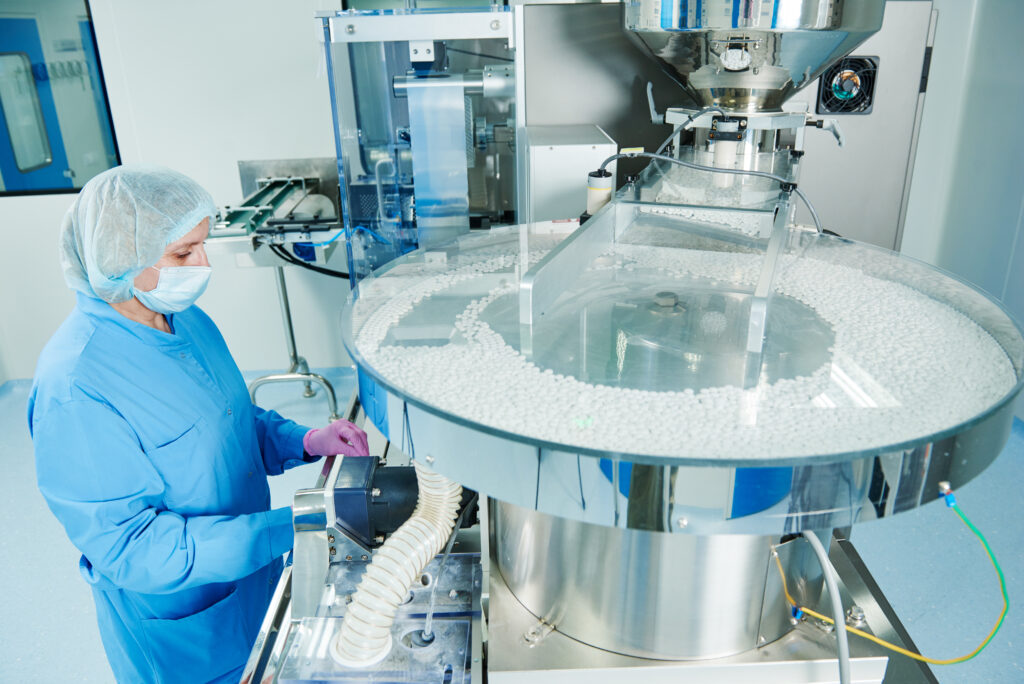Accelerating OSD Production with an Enhanced Scheduling Strategy
An established oral solids dosage (OSD) plant uses modeling to inform the formulation, pressing, and packaging for multiple OSD forms. By using the plant’s existing model, rather than creating a new one from scratch, the INOSIM team shortened the time it took to create an updated version to match the current state of the plant, which was now focused on batch-unit packaged goods operations. This digital twin can now easily be reused and adapted in the future.

Challenges
- Container and physical space limitations
- Production delays related to the number and frequency of general cleanings
- Overutilized work centers
The team at the OSD plant needed first and foremost to address limitations related to available containers and storage space. They needed an updated model capable of simulating how these limitations would affect production capacity, as well as to provide reliable solutions for overcoming these limitations and avoiding production delays. The plant’s efficiency largely depends on the number and extent of cleaning procedures, with cleanings during product changes being particularly laborious. Ideally, the simulations would also reveal improved production schedules to minimize the overall cleaning effort. Finally, the team had concluded that its equipment utilization was unbalanced across work centers: In some cases, two or three sieves were shared (over-utilized), while in others equipment was not used at all. Both inefficiencies required new rules for the allocation of equipment.
Solutions
- Modified utilization and production schedule
- Optimized inventory space usage
- Improved resource and energy usage, including CIP skid allocation
- Optimized production order list and material flow
To address its most pressing challenges, the team at the OSD plant used INOSIM simulations to manipulate the utilization and production order sequence, which led to a more efficient allocation of shared equipment. The simulations also revealed inventory space optimizations, such as the correct number of containers needed to avoid capacity losses due to packaging delays. The production order sequence was also optimized to reduce general cleanings and allocate available CIP skids more efficiently. Finally, INOSIM modeling helped the team optimize the production schedule and material flow by shifting some orders to other equipment or rescheduling them based on a more accurate production priority schedule.
Results
- Minimized packaging delays
- Accelerated production time for OSD forms
- Reduced the number of general cleanings by 15%
Perhaps most visible is the across-the-board acceleration of production throughout the OSD plant. This is thanks in large part to the more efficient allocation of shared equipment, which has helped the team avoid capacity losses and minimize associated delays. Resource and energy efficiency are also far better thanks to the updated INOSIM models, evidenced most notably by an overall reduction in time-consuming and costly general cleanings. Based on the newly optimized production schedule and material flow, the team has been able to shift orders to other equipment with more agility, leading to a far more efficient process. In the future, the team plans on using the model to forecast production plans and account for changing product demand trends.
Have any questions or want to know more about this topic? Contact us





